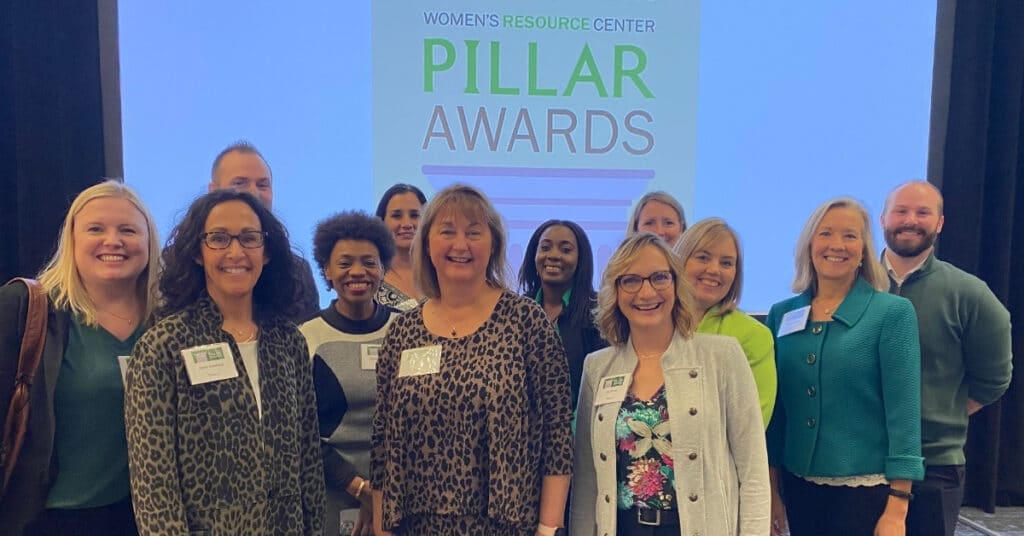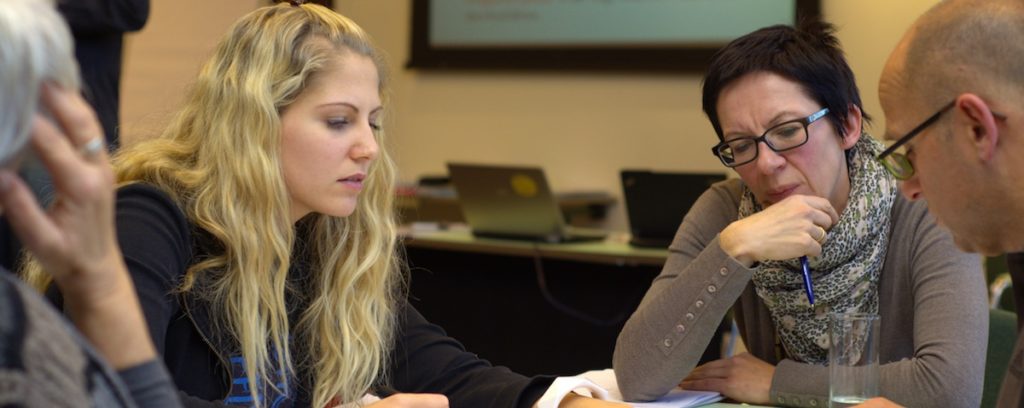Agile Recruiting Strategies for Small Businesses

In today’s world of work, companies need to be able to pivot on a dime. Often this requires hiring new talent to bring in new competencies. But growing your workforce can be a slow process, especially for businesses with limited recruiting resources.
Businesses can’t afford slow—speed consistently wins in any competitive market. When recruiting talent, a shorter time-to-fill not only improves an organization’s ability to pivot, but it also enhances the quality of candidates. A faster hiring process leads to fewer dropouts, less bidding, and greater access to diverse talent.
Thankfully, there’s a tried-and-true solution for boosting bootstrapped businesses, and it comes from software development. It’s called Agile.
Applying Agile to your hiring process will transform your recruiting into a lean, mean, talent acquisition machine.
A Quick Primer on the Agile Mindset
Wait, isn’t this a primer on speeding up recruiting? Absolutely, but before we get into the specifics of applying Agile to your hiring process, it’s essential to understand Agile’s underlying values.
In the 90s, the software industry used the waterfall model — a sequential approach to product development. While it offered a well-structured system for project management, its step-by-step design meant that a handful of small slow-downs could lead to extensive delays.
In 2001, a group of software developers created a new model that would deliver software faster. The result? The Agile Manifesto. This principled approach to faster innovation has contributed to the software explosion of the 21st century.
You likely have already heard of Agile — many behemoth corporations have implemented it outside their software development teams. But it’s unfeasible for most small businesses to follow the formalized Agile Methodology because it requires multiple, cross-functional teams.
Luckily, any organization can adopt the Agile values, four tenets that align well with the mindset of most small businesses.
How to Apply an Agile Mindset to Recruiting
Agile was designed as a reaction to typical challenges with the way things are. It’s not as much a different way to work, as it is a different way to think about work.
Those with an Agile mindset have four common characteristics:
- They ask tough questions
- Have an “always-on” improvement mindset
- Value self-organization
- Believe in collective decision making
Sound a bit like a small business mindset? You’re right.
Small businesses don’t have a deep bench of talent, their talent wears many hats, and they don’t have the luxury of not “pitching in to help” when the customer needs something different.
Borrowing from the design principles of Agile, here’s what you can do with a small team to speed up finding the right fit.
1. Prioritize individuals and interactions over process and tools.
The first value of Agile is “individuals and interactions over processes and tools.”
For recruiting, this means prioritizing a candidate-centric experience.
As a small business, an off-putting hiring process is a liability. It’s well established that candidate experience directly impacts brand reputation and future sales.
Here are a few ways to keep the candidate at the center of the experience.
Be intentional with your job posting. Sifting through unqualified candidates significantly slows down your time-to-fill. And having to restart the process because a new hire wasn’t the right fit destroys it. Ensuring your postings and descriptions set realistic expectations from the get-go will save you time down the line.
Avoiding exclusionary words in your posting will save you time as well. Mitigating biased language has been proven to drive more qualified and diverse applicants while also speeding up the hiring process by nearly 20%.
Leverage tech to keep the process rolling during off-hours. Trying to coordinate schedules can be one of the most extensive delays in the hiring process, especially for candidates who are currently working. Consider using digital tools like chatbots, text platforms, or one-way video interviewing to allow candidates to respond on their schedule.
Create a positive experience for “no”s. No one likes to be left hanging on a hiring decision, let alone being ghosted. In our own firm, we’ve found that the most consistent indicator for long-term hiring success has been how non-selected candidates feel about the experience. Prioritizing consistent touchpoints and authentic communication with candidates who don’t make the cut improves word-of-mouth for both your employer and consumer brands.
Regardless of what tools or technologies you employ (or don’t) to accomplish the above, Agile recruiting begins and ends with humanizing the experience.
2. Respond to change over following a plan.
A linear hiring process is just as prone to slow-down snowballs as the waterfall model from software development. To minimize delays, find opportunities to add flexibility back into your system.
Think in stages, not steps. While there has to be some sequencing in your hiring process, not every task has to happen in order. Take a look at your current list of hiring to-dos and identify the steps that have to occur before others can move forward. For all others, create a checklist that can be tackled in any order.
Do phone interviews need to wait until you’ve reviewed all applications? Do you have to wait to schedule second-round interviews until all first-round ones are complete? Do you have to hold off on administering an assessment until after the final in-person interviews?
With a more flexible process, when one task is delayed, you can mitigate its impact by working on others while you wait.
Don’t let your tools and processes drive your pipeline. To reiterate on Value 1, be wary of rigid technology and systems.
Case-in-point, applicant tracking systems (ATS). While we are huge advocates for using an ATS, over-relying on them for your hiring process often creates a linear, bottleneck-prone approach to recruiting and selection. Just because the feature is there, doesn’t mean you have to use it.
Do you always have to have an in-person interview? What happens if a candidate has an unexpected family emergency and your hiring manager is out on leave the next time they’re available? Instead of delaying for the perfect process, be comfortable moving to the next best option (whether that’s Teams, Zoom, or a phone call).
Assess your current processes and tools for their agility. If a step or tool is slowing you down, build back in flexibility, whether by de-prioritizing certain features, leveraging new tools, or accessing more Agile tech on a fractional basis.
3. Collaborate rather than negotiate.
One of the tenets of Agile is co-creating the solution rather than spending exorbitant hours in contract negotiation. This value is critical to creating win-win scenarios for candidates and employers.
Lay your cards out on the table. One of the mantras at our firm is “if you can’t fix it, feature it.” Not able to pay market rate? Don’t hide it; reframe the conversation around the other benefits you offer.
Remember, the incoming generation values transparency, not empty promises. So be transparent, even intentionally different, in how you talk about what your organization brings to the table.
Find out their priorities early. Before you reach the offer stage, you should know what drives a candidate. In your hiring process, think about how you can surface motivations, not just technical competencies. Gathering those insights early gives you time to prepare a package that will resonate with your top choice.
Be flexible with perks. If you don’t have wiggle room on salary, think through non-monetary incentives where you do have latitude. Hybrid work arrangements? Mentorships? Job shadowing? Creating a wide-ranging menu of benefits increases the likelihood of creating a win-win offer.
4. Working process over comprehensive documentation.
Nervous about creating a flawless hiring experience right out of the gates? Don’t worry about missing the mark. But do be ready to learn from it.
For small businesses, trying to start off with the perfect process isn’t worth the investment. There’s no one-size-fits-all recruiting system, and yours will need to regularly change and adapt (see Value 2 above).
So instead of trying to perfect the system before rolling it out, focus your time and attention on improving what you already have. At our own firm, we call this “building the plane as you fly.”
Approach your recruiting process with a continual improvement mindset. Whether you hire often or once in a blue moon, throughout the process make sure to:
- Plan
- Do
- Check
- Adjust
This mindset gives you the flexibility to change on the fly. For example, not getting the volume of qualified candidates you need to keep things moving? Don’t stick to the script. Try geofencing your postings or test out an AI tool to source on your behalf. If you get results, incorporate them into future postings; if you don’t, well, don’t.
Iteration is the building block of Agile. Incremental changes to your process will compound into significant improvements long term.
The organizations that are in the driver’s seat of their recruiting technology and processes, and not the other way around, are the ones that will be able to pivot and thrive in the post-pandemic labor market.
Wrapping Up
Speeding up your hiring process is a critical advantage when scaling in and adapting to today’s business world. And by adopting Agile values, organizations big and small can dramatically accelerate their recruiting.
To recap:
- Prioritize individuals and interactions over processes and tools. Keep focused on putting your candidates at the center of the why, how, and when you communicate. Leverage digital tools not out of convenience but to humanize the experience.
- Respond to change over following a plan. Shift from a tool and process-driven pipeline to a flexible hiring checklist. A non-sequential system allows you to keep moving forward even when unexpected change happens.
- Collaborate rather than negotiate. Surface your candidate’s work motivations in the selection process and provide yourself with a menu of monetary and non-monetary options that allow you both to walk away with a win-win offer.
- Working process over comprehensive documentation. Favor progress over perfection with an iterative approach to building a candidate-centric experience. (Aka “build the plane as you fly.”)
Change isn’t easy, but these are practical strategies to transform and better utilize the resources of your lean organization while making the candidate experience and quality of hire better.
Looking For More Ways To Speed Up Your Recruiting Pipeline?
- Check out our 11 additional strategies for streamlining your recruiting.
- Explore our Recruiting Accelerator services.
Share This Article
































































































